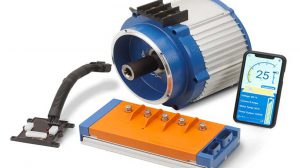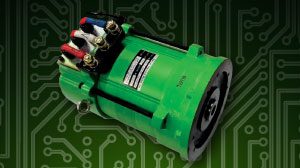By: Matt Vallez
This article was originally published in the Golf Car News Nov / Dec 2008 issue, it has been fact checked and updated as needed.
If you own or maintain a fleet of gas golf cars, you have two key times for yearly maintenance: spring or fall. At the end of the season, do you procrastinate until next year, or do you “get ‘err done” (as they say in the South) so those cars are ready for an early spring? Personally, I prefer an early spring start. So let’s see what it takes to prepare a gas fleet for a long winter’s nap. You electric-only guys can still read on and apply what fits.
The first thing before storing a golf car – or any piece of equipment, for that matter – is to give it a thorough cleaning. Any mud, dirt, or grime left on the car will only be more difficult to remove later. Also, it’s much easier to properly inspect and work on a clean vehicle. When you’re finished cleaning the outside of the car, pick up the seat and spray the battery so it’s free of corrosion. If water alone can’t do the job, mix some baking soda and water together – about one box of baking soda to a gallon of water. Lightly brush the outside of the battery with the paste. Rinse with water and dry. While you have the seat up, check connecting wires to and from the battery, making sure that cables are tight and in good shape. This is also a good time to cover the battery terminals with a protective coating. I prefer the anti-corrosion felt washers that go over the battery posts. Nivel #3118 are the correct size for gas golf car batteries.
Before you move on, park your golf cart in the area where it will be spending the winter – otherwise, you will be pushing it into place later! Drain the fuel from all parts and plumbing between the fuel tank and the carburetor. This prevents gas from breaking down and gumming up the small parts in the carburetor and/or the fuel pump. If the car is equipped with a shut-off valve, turn it off. If no shut-off valve is present, disconnect fuel line from the fuel tank, then run the engine until it quits – this will drain most fuel out of the system. Drain the remaining fuel out of carburetor bowl by loosening the bottom screw or bolt. Finally, seal the fuel tank so no air can get in. Start by tightening the cap. If you can’t get a good seal, replace the gasket or the entire cap. Next, use a golf tee with some duct tape to seal the vent tube. Just be sure to use a fresh wooden golf tee. While you are in the proximity, replace the fuel filter. This will also allow any leftover fuel to escape.
This is the proper time to do a complete tune-up. Remember, if you don’t do the tune-up now, you’ll have to do it in the spring. Spring may come early and you could be caught off-guard, so I highly recommend you do the tune-up in the fall. Start by replacing the fuel filter and air filter. Then clean or replace the oil filter and remove the old spark plug. Pour a half-ounce of oil into the spark plug hole, as this will keep the cylinder from rust or corrosion. Install a new spark plug. Check your oil, change it as needed, and check all other fluids and lubricate as required.
Next, disconnect the battery cables. This will help prevent a myriad of problems from occurring – after all, you can’t have an electrical problem if the electricity is not connected. Also, air up the tires to the proper tire pressure, as this will help your tires maintain their shape. Lastly, do not lock the parking brake. If you lock the brake and leave the golf car sitting for an extended period, the cable will stretch. Instead, use a 2 x 4 to chock at least two of the wheels. This will prevent the car from going anywhere.
Now that your maintenance is finished, you can rest assured that you’ll only have a little work to do on each of these winterized gas golf cars when the season begins next year. Just sit back, relax with a beverage of your choice, and grab some reading material – perhaps a Nivel parts catalog? Regardless, enjoy your off-season!










